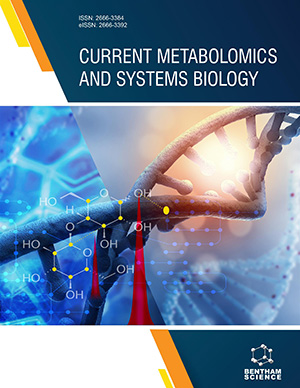Abstract
Oxaloacetate, an intermediate in the tricarboxylic acid cycle, plays important roles in regulating mitochondrial function, gluconeogenesis, the urea cycle, and amino acid syntheses. Because this compound is not stable, more information is needed about its stability profile before its medicinal potential can be realized. In this short review, we present current knowledge and understanding of oxaloacetate with a focus on its stability, degradation, quantification methods, regulation of mitochondrial function, and potential therapeutic benefits. Further, we report previously unpublished spectral data related to the stability profile of oxaloacetate. We found that oxaloacetate has a half-life of about 14 hours in biological aqueous solution at 25°C before degrading into pyruvate. This mandates careful attention to handling this compound including storage at -20 to -80°C when not in use to prolong its shelf-life. Also, the oxaloacetate stability profile needs to be taken into account when conducting experiments involving the compound either in clinical trials or evaluating it as a health supplement or for other experiments. Measuring oxaloacetate by mass-spectrometry requires cumbersome derivatization to assure stability. However, we found that NMR can be used to detect oxaloacetate quantitatively without the need for making derivatives, and the NMR method is sensitive enough to detect oxaloacetate in the micromolar range. Using this method, we showed that oxaloacetate regulates mitochondrial complex II-driven respiration by potent inhibition of succinate dehydrogenase. Moreover, a growing literature in the past few years suggests that oxaloacetate may have therapeutic benefits in treating a variety of diseases.
Keywords: Oxaloacetic acid, oxaloacetate, NMR, mitochondrial metabolism, mitochondria, bioenergetics, respiration.
Graphical Abstract
[http://dx.doi.org/10.1111/j.1432-1033.1988.tb14307.x] [PMID: 3049083]
[PMID: 12537350]
[PMID: 9834842]
[http://dx.doi.org/10.1042/BJ20080709] [PMID: 18613815]
[http://dx.doi.org/10.1042/BST20120041] [PMID: 22616868]
[http://dx.doi.org/10.1007/978-3-319-46503-6_11]
[http://dx.doi.org/10.1021/acs.biochem.8b00914] [PMID: 30365304]
[http://dx.doi.org/10.1042/BSR20100117] [PMID: 20977429]
[http://dx.doi.org/10.1155/2016/7560919] [PMID: 27656296]
[http://dx.doi.org/10.1021/bi00461a002] [PMID: 2337600]
[http://dx.doi.org/10.1146/annurev.biochem.66.1.581] [PMID: 9242918]
[http://dx.doi.org/10.1042/BCJ20180750] [PMID: 30348641]
[PMID: 21494411]
[http://dx.doi.org/10.1093/ajcn/30.12.2083] [PMID: 337792]
[http://dx.doi.org/10.1371/journal.pone.0154982] [PMID: 27153112]
[http://dx.doi.org/10.1074/jbc.RA118.005144] [PMID: 30385511]
[http://dx.doi.org/10.1016/0006-291X(61)90252-2] [PMID: 13748457]
[http://dx.doi.org/10.1002/glia.21265] [PMID: 22052553]
[http://dx.doi.org/10.1021/ac500472c] [PMID: 24533614]
[http://dx.doi.org/10.1155/2017/5391832] [PMID: 29075551]
[http://dx.doi.org/10.12688/wellcomeopenres.14832.1] [PMID: 30345389]
[http://dx.doi.org/10.1016/j.ab.2014.07.027] [PMID: 25102203]
[http://dx.doi.org/10.1007/BF00197809] [PMID: 8520220]
[http://dx.doi.org/10.1007/BF00404272] [PMID: 22911360]
[http://dx.doi.org/10.1093/bioinformatics/btu830] [PMID: 25505092]
[PMID: 14019996]
[PMID: 14216061]
[http://dx.doi.org/10.1038/188552a0] [PMID: 13685479]
[http://dx.doi.org/10.1007/s10517-010-0904-5] [PMID: 21113488]
[http://dx.doi.org/10.1152/ajpregu.00528.2010] [PMID: 21248309]
[PMID: 8408004]
[http://dx.doi.org/10.1016/j.jphotobiol.2011.09.002] [PMID: 21995892]
[http://dx.doi.org/10.1021/acs.jpcb.5b00965] [PMID: 26023820]
[http://dx.doi.org/10.3390/molecules21121706] [PMID: 27973422]
[http://dx.doi.org/10.1016/j.tca.2016.04.006]
[http://dx.doi.org/10.1096/fj.201900690R] [PMID: 31361970]
[PMID: 22750268]
[http://dx.doi.org/10.1097/01.mpa.0000153326.69816.7d] [PMID: 15714131]
[http://dx.doi.org/10.1016/S0925-4439(97)00035-5] [PMID: 9300800]
[http://dx.doi.org/10.1016/j.ajhg.2016.11.014] [PMID: 27989324]
[PMID: 25206509]
[http://dx.doi.org/10.3390/cells7120274] [PMID: 30563029]
[http://dx.doi.org/10.1074/jbc.M900985200] [PMID: 19304986]
[http://dx.doi.org/10.1111/j.1474-9726.2009.00527.x] [PMID: 19793063]
[http://dx.doi.org/10.1089/rej.2010.1025] [PMID: 20645869]
[http://dx.doi.org/10.2174/1876326X00903010022]
[http://dx.doi.org/10.1038/jcbfm.2013.186] [PMID: 24149933]
[http://dx.doi.org/10.1038/jcbfm.2011.3] [PMID: 21266983]
[http://dx.doi.org/10.1007/s10571-009-9364-8] [PMID: 19259807]
[http://dx.doi.org/10.1016/S0378-4274(03)00114-0] [PMID: 12749815]
[http://dx.doi.org/10.1097/ALN.0b013e31823d7731] [PMID: 22129535]
[http://dx.doi.org/10.3892/mmr.2013.1793] [PMID: 24220720]
[http://dx.doi.org/10.1007/s13311-012-0129-6] [PMID: 22711471]
[http://dx.doi.org/10.3390/ijms19061626] [PMID: 29857490]
[http://dx.doi.org/10.3390/antiox6010021] [PMID: 28300753]
[http://dx.doi.org/10.1111/jnc.13545] [PMID: 26811028]
[http://dx.doi.org/10.1093/hmg/ddu371] [PMID: 25027327]
[http://dx.doi.org/10.1007/s10637-012-9794-x] [PMID: 22392507]
[http://dx.doi.org/10.1620/tjem.96.127] [PMID: 4884771]
[http://dx.doi.org/10.1016/j.bbacli.2016.03.005] [PMID: 27051598]
[http://dx.doi.org/10.1111/jnc.13509] [PMID: 26968700]
[http://dx.doi.org/10.1016/j.jalz.2018.06.2411]
 25
25 2
2






















